Although people often distinguish between “reindeer” (Europe/Asia) and “caribou” (North America), they are actually the same species:
Rangifer tarandus.
What varies is the subspecies. Over thousands of years, different populations adapted to:
Arctic tundra vs. dense boreal forest
Mountain vs. lowland plains
Wild vs. semi-domesticated life
Because of this, zoologists recognize 14 subspecies of reindeer/caribou.
They are usually grouped into:
Eurasian subspecies
North American subspecies
One extinct subspecies
Below you’ll find an overview of each, with habitat, appearance and ecological notes so readers can clearly see how diverse this “single” species really is.
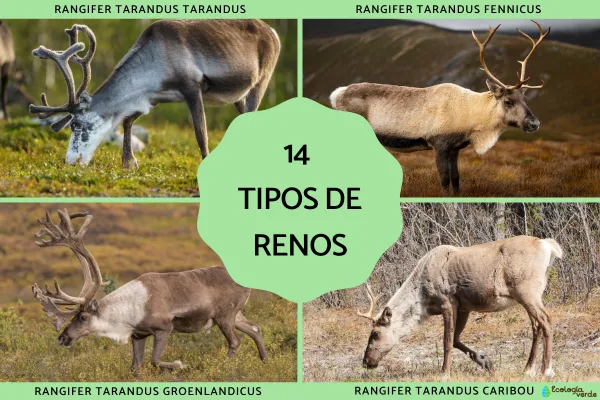
Often called the Norwegian mountain reindeer, this is the classic wild reindeer of the Scandinavian Peninsula.
Habitat: Mountain tundra and high plateaus in Norway and Sweden
Size: Medium to large; strongly built for long-distance migration
Lifestyle:
Wild herds still exist, alongside semi-domesticated groups
Many populations perform seasonal migrations, following the best grazing between mountain tundra and lower areas
Notes:
Sometimes called fjellrein in Norwegian
Considered an emblematic reindeer of Europe, strongly tied to local culture and traditional herding
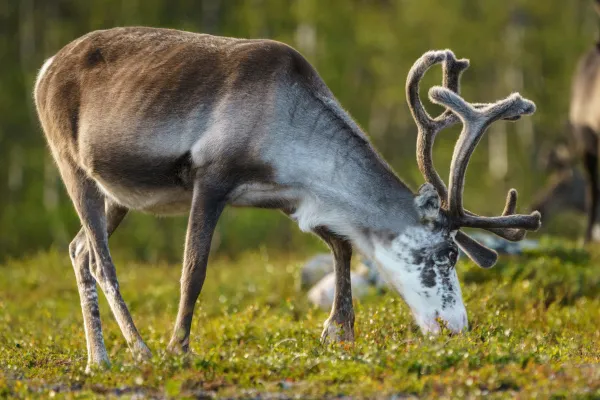
This subspecies is often referred to as the Eurasian forest reindeer.
Habitat: Dense boreal forests of Finland and northwestern Russia
Size: Generally larger and leggier than tundra reindeer
Adaptations:
Long legs and large, wide hooves help it move through deep snow
Antlers with a broad “V” shape
Status:
Populations are small and fragmented
Some herds cross the Finnish–Russian border, making monitoring and conservation more complex
Forest reindeer are more secretive and harder to observe than open-tundra forms, which is one reason they’re less familiar to the general public.
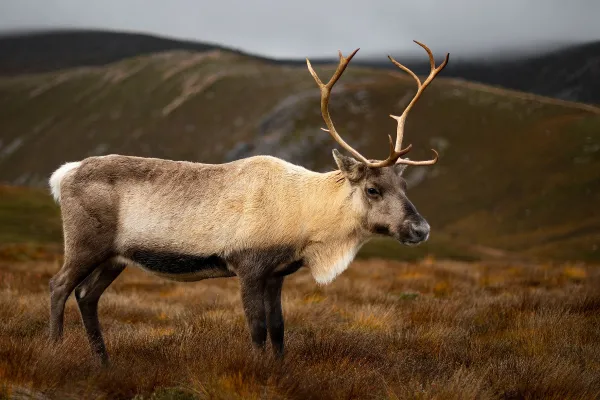
The Svalbard reindeer is one of the smallest reindeer subspecies.
Habitat: The Arctic archipelago of Svalbard (Norway)
Size:
Males: ~65–90 kg
Females: ~53–70 kg
Appearance & Lifestyle:
Very thick, light-colored coat adapted to the high Arctic
More sedentary than most other reindeer, with limited seasonal movements
Conservation history:
Was driven close to extinction by hunting
After protection and hunting bans, populations have recovered, often used as a conservation success story in Arctic ecology
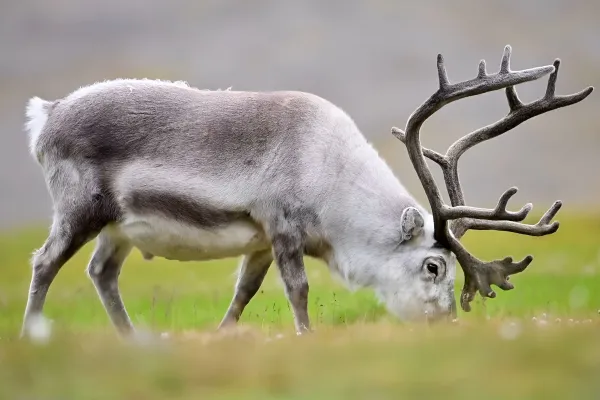
This subspecies includes some of the largest wild tundra herds on Earth.
Habitat: Tundra regions of northern Russia, from European Russia to Siberia
Population:
Includes around 19 major wild herds, historically totaling close to one million animals in some periods
The famous Taimyr herd has been one of the world’s largest reindeer herds
Diet & Life:
Long-distance migrants across open tundra
Feed on lichens, grasses and dwarf shrubs, especially in winter
Recent changes:
Numbers have declined in recent decades, linked to climate change, industrial expansion and increased human disturbance
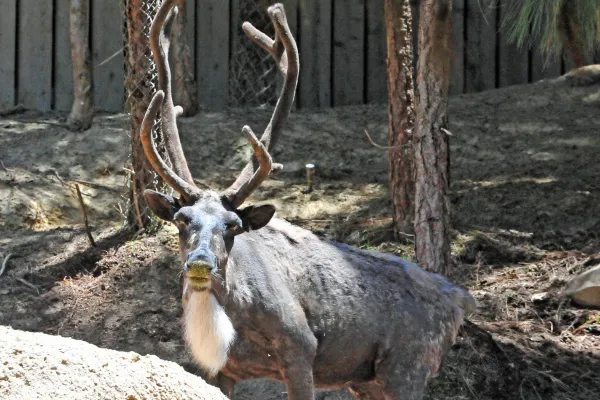
Sometimes called the Altai–Sayan reindeer, this form lives far inland, in a mountain landscape.
Habitat: Forest mountains of the Altai–Sayan region, at 400–1,500 m elevation
Movements:
Performs vertical migrations, moving up and down slopes with the seasons
Diet:
Strongly reliant on lichens in coniferous forests, especially in winter
Appearance & Genetics:
Coat often described as sandy to reddish-brown
Genetic studies show a distinct mitochondrial lineage, with little or no mixing with domestic reindeer, reflecting a long, separate history in mountain habitats
This subspecies includes the island reindeer of Novaya Zemlya in Arctic Russia.
Habitat: Islands of Novaya Zemlya, plus reindeer populations on New Siberian Islands and Wrangel Island
Status & Use:
Around 5,000 animals, including domestic and hybrid herds
Historically, some herds used to migrate over sea ice to the mainland in summer, but such long crossings are now rare, likely due to climate shifts and ice changes
This reindeer lives in the Far East of Russia, in the Kamchatka region.
Habitat: Kamchatka Peninsula and parts of the Sea of Okhotsk region
Appearance:
Coat and antler shape resemble North American barren-ground caribou
Origins:
Thought to have originated from Beringia, forming its own evolutionary lineage in Kamchatka
Conservation:
Hunting and regional development have reduced populations
A surviving herd is protected within the Kronotsky Nature Reserve, making it an important subspecies for conservation management
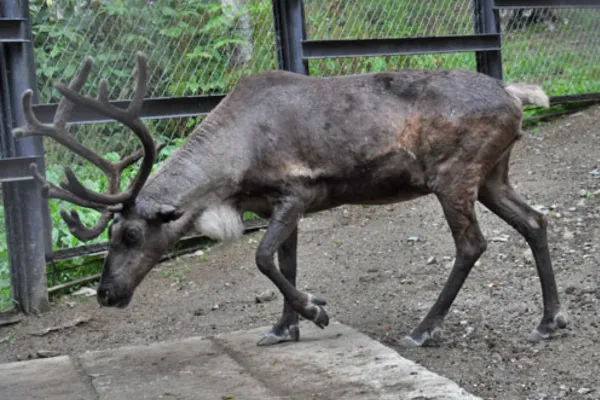
This is a plains-dwelling, migratory caribou of the far north.
Habitat: Tundra regions of Canada and Greenland
Movements:
Forms large, long-distance migratory herds travelling between open tundra and more sheltered areas
Size & Appearance:
Females: ~85–135 kg
Males: ~100–140 kg
Males develop a white mane in autumn
Diet:
Grasses, sedges and lichens, especially important in winter
These herds are culturally and ecologically vital for northern Indigenous communities and Arctic predators.
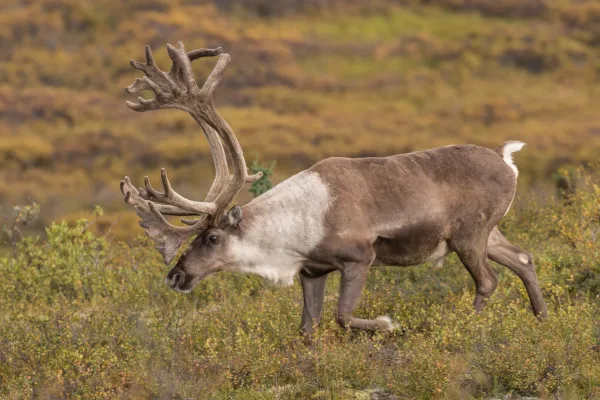
Often simply called woodland caribou, this subspecies is associated with North American boreal forests.
Habitat: Coniferous forests and muskegs across Canada and parts of Alaska
Size:
Height at shoulder: ~1–1.2 m
Weight: typically 110–210 kg, with males larger than females
Adaptations:
Broad, crescent-shaped hooves to walk on snow and dig for lichens
Dense, complex antlers, especially in males
Coat:
Brown in summer, changing to greyish in winter
Neck often creamy or pale, giving a striking contrast in winter forest landscapes
Many woodland caribou populations are now considered threatened, mainly due to habitat fragmentation and increased predation linked to human disturbance.
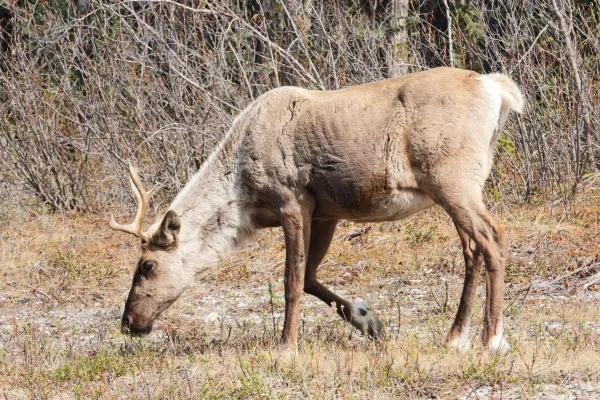
This subspecies includes the George River and Leaf River herds in Nunavik (northern Quebec) and Labrador.
Ecological type:
Often described as forest caribou, but their migratory behavior is similar to barren-ground herds, covering thousands of kilometers between tundra and forest
Taxonomy:
Some experts treat them as a distinct subspecies
Others group them with other barren-ground forms
Conservation:
These herds have experienced dramatic population swings, and long-term management and conservation are crucial to their survival
Osborn’s caribou is a large mountain subspecies found in western Canada.
Habitat: Northern British Columbia and Yukon, mainly in mountainous regions
Size:
One of the largest caribou forms, with some individuals reaching up to 340 kg
Appearance:
Reddish-brown coat
White neck
Heavy, semi-palmate antlers
Movements:
Descend to lower valleys in winter to feed on ground lichens and better shelter
Status:
Localized distribution makes this subspecies sensitive to disturbance, logging and industrial development
The Peary caribou is a small, high-Arctic form found in the Canadian Arctic Archipelago.
Habitat: Arctic islands of northern Canada
Size:
Males: about 1.7 m in length, ~110 kg
Females: around 60 kg
Appearance:
Almost white in winter, blending with snow and ice
Darker coat in spring and summer
Short legs and a short, blunt face, suited to harsh Arctic conditions
Lifestyle:
More locally mobile than some migratory mainland herds
Feeds on scarce Arctic vegetation such as grasses, sedges, dwarf shrubs and willows
Peary caribou are considered highly vulnerable to climate change, sea ice loss and human disturbance in the High Arctic.
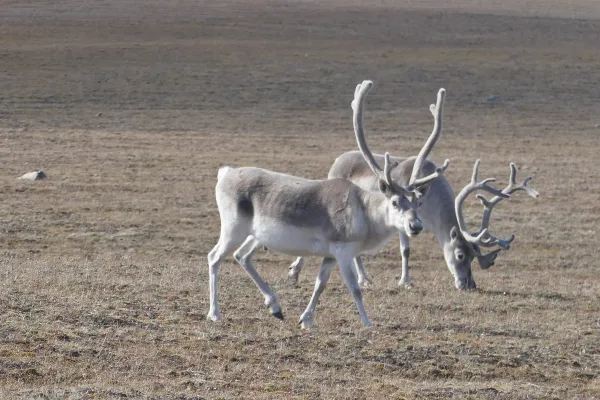
This subspecies is isolated on the island of Newfoundland.
Habitat: The island of Newfoundland, off Canada’s Atlantic coast
Predators:
After wolves were eradicated in the 20th century, Canada lynx became the main natural predator
Taxonomy & Ecology:
Earlier authors grouped them with other forms, but
Their insular isolation and unique ecology support treating them as a distinct subspecies
Distinct traits:
Show specific behavioral and ecological adaptations to life on an island, including different migration patterns and responses to local vegetation and predators
Dawson’s caribou once lived on Graham Island, part of the Haida Gwaii archipelago off the coast of British Columbia, Canada.
Appearance:
Greyish coat, adapted to the island’s cool, wet climate
Extinction:
Habitat loss
Introduced diseases
Overhunting
Disappeared in the early 20th century due to:
The last three known individuals were shot in 1908 and preserved in a museum collection
Genetics:
Later genetic analyses suggest Dawson’s caribou may not have been extremely distinct from mainland caribou, but their island isolation gave them unique ecological traits that were lost with their extinction
Reindeer/caribou are a keystone herbivore of northern ecosystems:
They shape plant communities through grazing
They are vital prey for wolves, bears and other large carnivores
Many Indigenous cultures depend on them for food, clothing and cultural identity
Recognizing the 14 subspecies of Rangifer tarandus helps scientists, wildlife managers and local communities:
Track population trends
Protect unique genetic lineages
Design conservation plans tailored to each region’s climate, predators and human pressures
From the tiny Svalbard reindeer to the massive Osborn’s caribou, all of these forms remind us how a single species can diversify and adapt to some of the harshest environments on Earth.
Referencias
National Park Service. (2025). Reindeer vs. Caribou. https://www.nps.gov/articles/000/reinderrvscaribou.htm#:~:text=Caribou%20and%20reindeer%20are%20the,case%20of%20reindeer%2C%20selective%20breeding
Bibliografía
Thomas, D. y Gray, D. (2002). Woodland caribou (Rangifer tarandus caribou) COSEWIC assessment and status report: chapter 6. https://www.canada.ca/en/environment-climate-change/services/species-risk-public-registry/cosewic-assessments-status-reports/woodland-caribou/chapter-6.html
Harding LE. Available names for Rangifer (Mammalia, Artiodactyla, Cervidae) species and subspecies. Zookeys. 2022 Aug 26;1119:117-151. doi: 10.3897/zookeys.1119.80233. Erratum in: Zookeys. 2022 Sep 28;1122:173-174. doi: 10.3897/zookeys.1122.94672. PMID: 36762356; PMCID: PMC9848878.
Yalden, D. W. 1999. The History of British Mammals. T & A D Poyser (London).
Canadian Geographic. https://canadiangeographic.ca/
Species at Risk. https://www.nwtspeciesatrisk.ca/en
animal tags: Reindeer
We created this article in conjunction with AI technology, then made sure it was fact-checked and edited by a Animals Top editor.